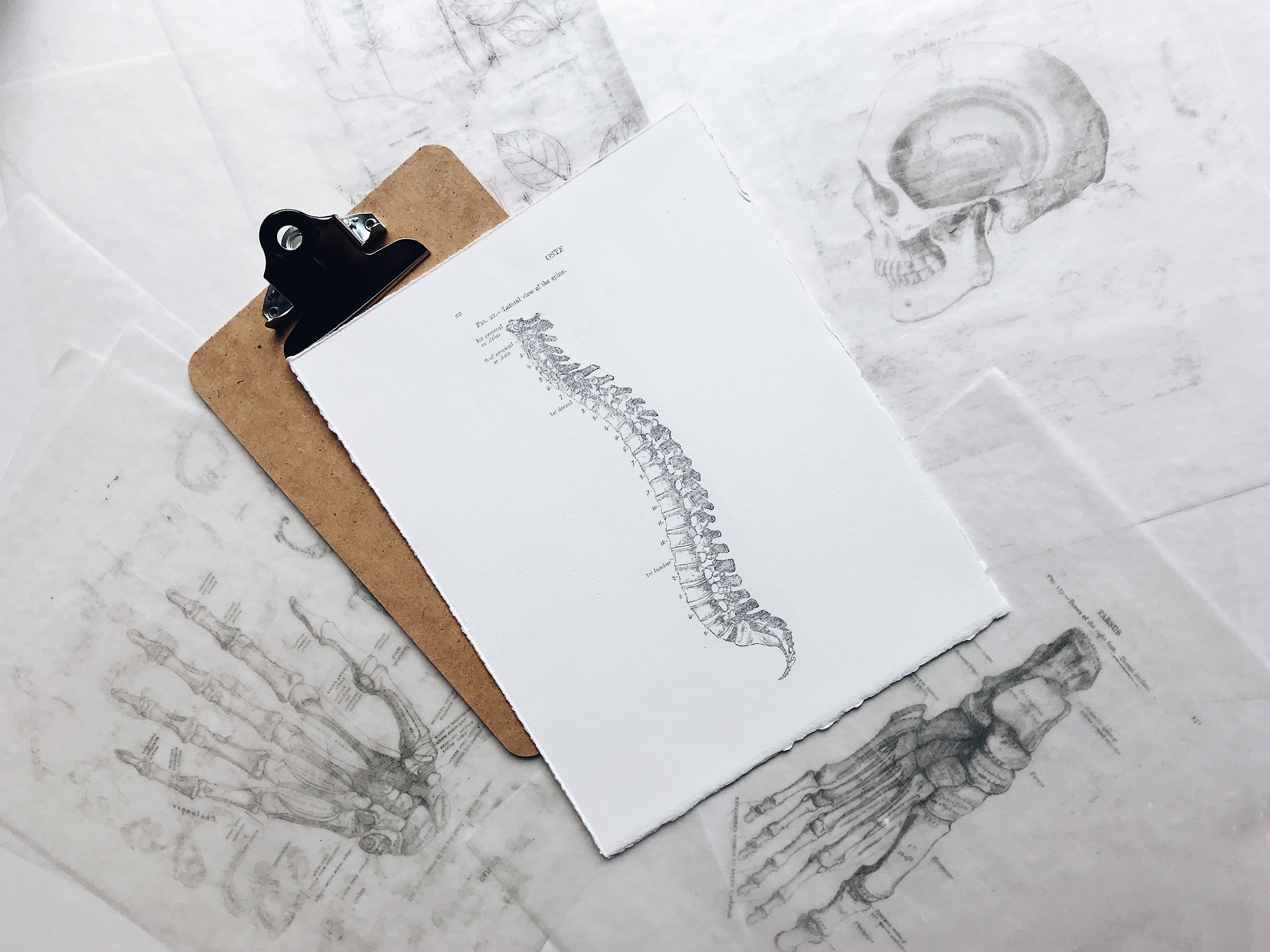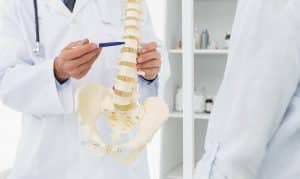Surprise: Chiropractors Can Help These 5 Conditions
You might think chiropractors are only able to help with back aches, stiff necks, slipped discs and whiplash injuries. If so, you're not alone – but you're missing out.
Chiropractic care – which is based on the understanding that, given the opportunity, the mind and body can heal itself – can treat many issues that might surprise you.
Here's a look at the top five most surprising conditions a chiropractor can treat:
1. Migraines and tension headaches
Nine out of 10 Americans suffer from headaches. Some are occasional. Some are persistent. Some are dull and nagging, while others cause debilitating pain and nausea. Taking a painkiller and hoping your headache goes away is one option. But there's a better one.
Research shows that spinal manipulation – the primary form of care provided by chiropractic doctors – is an effective way to treat tension headaches and headaches that begin in the neck.
In a clinical trial conducted at Macquarie University, 72 percent of migraine sufferers experienced either "substantial" or "noticeable" improvement after a period of chiropractic treatment.
In fact, most headaches are related to muscle tension in the neck, which is an increasingly common condition among Americans who spend hours in the same position or posture (such as in front of a computer or television), leading to joint irritation and tension in the upper back and scalp that cause headaches.
What Can a Doctor of Chiropractic Do?
- Perform spinal manipulation or chiropractic adjustments to improve spinal function and alleviate stress on your system.
- Provide nutritional advice, recommending a change in diet or the addition of vitamins.
- Offer advice on posture, ergonomics, exercises and relaxation techniques.
2. Stress and anxiety
We perceive stress from three basic sources: our environment, our body and our emotions.
Environmental stress includes noise, weather, physical threats, time pressures and performance standards. Body stress includes disease processes, organ malfunction, poor nutrition, poor sleep and physical injury. And emotional stress is more difficult to define, but it encompasses our reactions, in both thought and emotion, to environmental and physical stressors.
Jobs today are increasingly complex as the business world becomes more and more competitive. Physical stresses such as sound, air and water pollution have also grown worse over the last century – especially in the United States – and so have emotional and psychological stresses caused by an increasing awareness of troubles and tragedies around the globe, brought to our attention every hour by the Internet and its 24/7 news cycle.
Many illnesses are caused or worsened by stress, which activates our "fight or flight" reaction. This systemic reaction affects almost every part of the body, as the hypothalamus in the brain stimulates the sympathetic nervous system, which causes an increase in heart rate, blood volume and blood pressure, redirecting blood away from our digestive system and extremities.
When prolonged, the long-term effects of this state can be disastrous to good health and cause high blood pressure, muscle tissue damage, diabetes, infertility, damage to the immune system and slowed healing from disease and injury.
Chiropractors work primarily with the spine – the root of the nervous system through which nerve impulses travel between the brain and the rest of the body – and can help the body manage and process this stress in a healthier way.
What Can a Doctor of Chiropractic Do?
- Chiropractors can release muscle tension, one effect of chronic stress that leads to nerve irritation and creates uneven pressures on the body's bony structures, which can cause the spinal column to become misaligned. This, in turn, helps the body return to a more balanced, relaxed state.
- Chiropractic adjustments can reduce spinal nerve irritation and improve blood circulation, which can help signal the brain to turn off the "fight or flight" response and begin the healing process.
- A doctor of chiropractic can suggest nutritional supplements, like B complex vitamins, to help the body cope with stress.
- A chiropractor can also recommend relaxation techniques and discuss posture and environmental changes to help you recover from chronic stress.
3. Fibromyalgia
Fibromyalgia is a chronic disorder involving widespread pain and sensitivity throughout the entire musculoskeletal system. To be diagnosed with FM, a patient typically has a minimum of 11 out of 18 specific tender points on the body. In addition to pain, patients also report long-term fatigue and/or disturbed sleep and mood. Other disorders commonly associated with FM include irritable bowel syndrome, TMJ pain and dysfunction, psychological conditions and some autoimmune diseases.
Fibromyalgia is a widespread condition that affects about 2 percent of the United States, and medical science has yet to discover the cause of this condition.
Since those with FM often experience an altered mood, like depression, many experts focus on the psychological aspect of the disease. Others feel that FM is more physiological and has its origins in physical trauma or chronic postural alterations. Still others suggest that FM is a central nervous system disorder rooted in neurochemical imbalances, since those with FM are hypersensitive to even the slightest stimuli and often have a pain response to normally non-painful pressure or activity. Since all information from the outside world is collected and analyzed by the nervous system, it's logical to assume that if a person with FM is sensitive to a stimulus that others are not, there may be something wrong with this system.
It's often difficult for patients to find solutions for all of their symptoms, but recent studies show that chiropractic adjustments combined with a soft tissue technique called ischemic compression can help FM patients.
In one study, 60 percent of the subjects treated by a chiropractor experienced a significant improvement: reduced pain, improved sleep and decreased fatigue.
What Can a Doctor of Chiropractic Do?
- Chiropractors are trained as neuromusculoskeletal specialists, and one of the main focuses of chiropractic care is the positive impact it can have on a person's nervous system. Therefore, chiropractic adjustments can improve a FM patient's nervous system, which gives them a better chance for recovery.
- Chiropractic care can treat pressure points, back pain, neck pain, shoulder pain, headaches and pain from musculoskeletal injuries.
- Chiropractors can also reduce a patient's overall pain through spinal adjustments that increase the mobility between spinal vertebrae, which have become restricted, locked or slightly out of proper position, thereby increasing cervical and lumbar range of motion.
4. Weak immune systems
The nervous system, endocrine system and immune system are inextricably linked. Together they share tiny messenger molecules that mediate communication between them, creating optimal responses for the body to adapt and heal appropriately.
Until recently, one of these messenger molecules, IL-2, was thought of as an immune system molecule. But recent studies have clearly shown its presence and activity in the nervous system, leading researchers to believe that neural dysfunctions due to spinal misalignments are stressful to the body and can cause abnormal changes that lead to a poorly coordinated immune response.
Subluxation is the term for misalignments of the spine that cause compression and irritation of nerve pathways, affecting the body's organs. Subluxations are an example of physical nerve stress that affects neuronal control. According to researchers, such stressful conditions lead to altered measures of immune function and an increased susceptibility to a variety of diseases.
It's important to note here how the endocrine system also impacts the immune system by producing cortisol in the adrenal glands – endocrine glands that are directly connected to the nervous system through the sympathetic nervous system – a stress hormone that inhibits the immune system.
If the sympathetic nervous system is too "switched on" due to stress and subluxation, it can increase the adrenal glands' synthesis of cortisol, in turn affecting the immune system.
What Can a Doctor of Chiropractic Do?
- Chiropractic care is the only way to detect and eliminate subluxation, and chiropractic adjustments have been shown to reduce the stress on the nervous system, thereby boosting the coordinated responses of the nervous and immune systems.
- One research group found that when an adjustment was applied to a subluxated area, the white blood cell count collected rose significantly.
- Another study measured the effects of six months of regular chiropractic care on the immune system function of HIV patients. At the end of six months of care, the patients who had received regular adjustments showed a 48 percent increase in the number of CD4+ T cells, whereas patients who had not been adjusted showed an 8 percent decrease in CD4+ T cells.
5. Flexibility
When we're younger, it's easy to take our extensive range of motion and flexibility for granted. As we age, a number of health conditions – and the cumulative effects of wear and tear – can affect our ability to move the way we used to.
But a decrease in range of motion and flexibility can result in a downward spiral of disability.
For example, an injury or degenerative condition that causes pain, swelling and stiffness, may limit our flexibility and range of motion. When this happens, we may avoid activities that involve the affected body parts, either consciously or unconsciously.
This then becomes a classic case of "use it or lose it." Without regular exercise, the muscles and joints stiffen, adhesions and scar tissue can form, and mobility may be further reduced. Eventually, a person can become completely incapacitated, and ordinary tasks such as picking up something off the floor or tying your shoes can become extremely challenging or painful.
Regular chiropractic can help increase both range of motion and flexibility.
A study performed by researchers at the Phillip Chiropractic Research Centre of RMIT University in Melbourne, Australia, and published in the Journal of Manipulative and Physiological Therapeutics found that chiropractic adjustments increased range of motion in the 105 patients who participated in the study. There were three phases of this study, in which each of the participants was given no adjustments, fake adjustments or true adjustments. In each phase, the patients who were given the true adjustments showed a significant improvement in range of motion, which was not the case for the other two groups.
What Can a Doctor of Chiropractic Do?
- A chiropractor uses spinal adjustments and manipulations to other parts of the body to realign the bones and joints so as to reduce pain, restore range of motion and improve flexibility, balance and coordination.
- Your chiropractor can also recommend specific exercises that can be done at home to increase your strength and flexibility so that you're able to maintain and build upon the gains from your chiropractic adjustments.
- Regular chiropractic care can reduce or eliminate the source of your back and joint pain, allowing you to resume your normal activities and to remain more flexible into your golden years.





